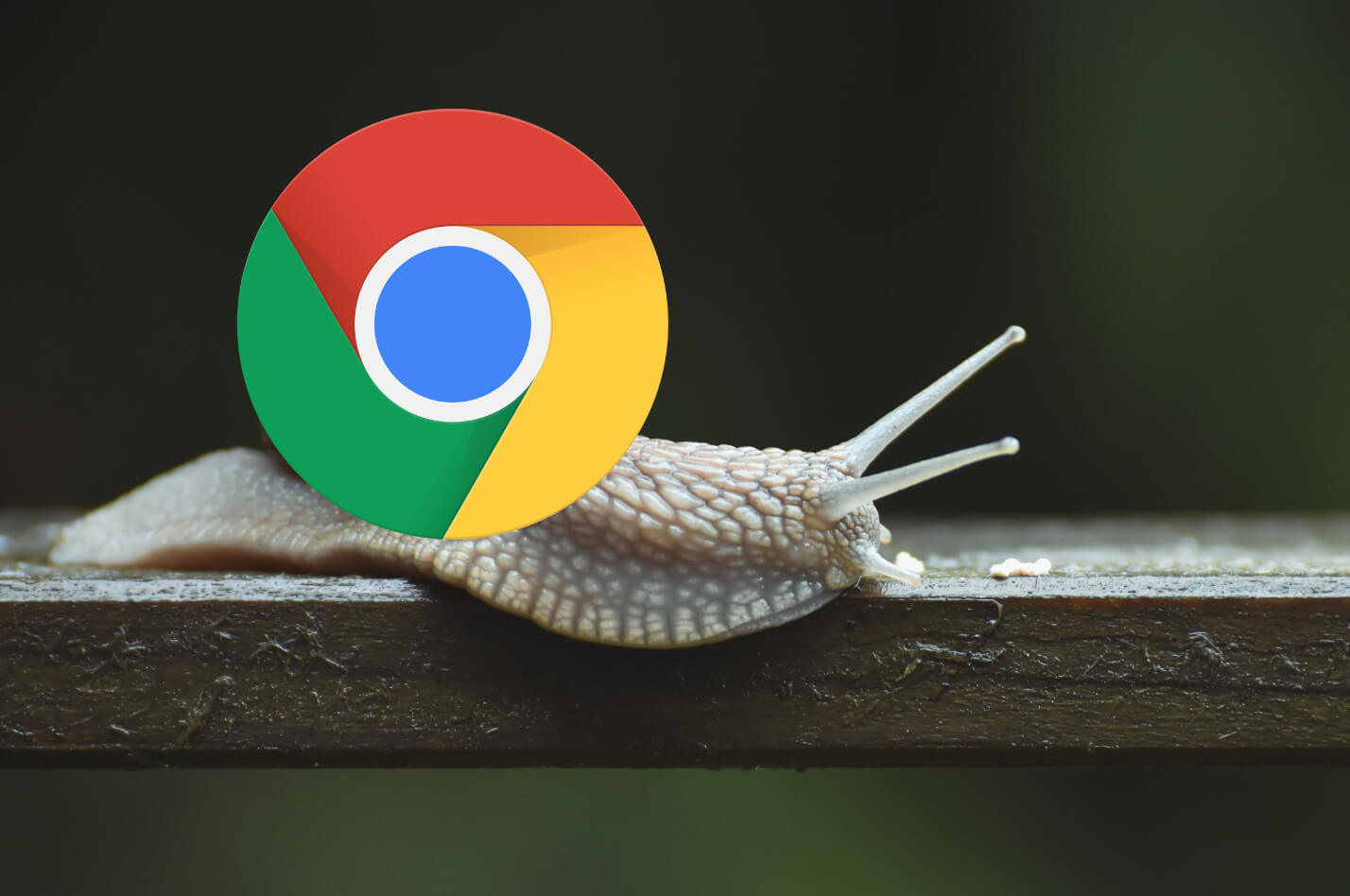Introduction
With the increasing complexity of web applications and the availability of numerous browser tabs, it’s not uncommon to experience sluggish performance on Google Chrome. Have you ever wondered which tab is responsible for hogging your CPU resources? Identifying the culprit can help you take necessary actions to optimize your browsing experience.
Knowing which tab is using the CPU can be valuable for several reasons. First, it allows you to prioritize your browsing activities by identifying active tabs that are contributing to high CPU usage. This can be particularly useful if you have limited system resources or if you need to focus on particular tasks that require responsiveness. Moreover, identifying CPU-intensive tabs can help you identify poorly optimized websites or browser extensions that could be draining your system’s resources unnecessarily.
In this article, we will explore how to use Chrome’s built-in Task Manager to identify CPU usage and how to pinpoint CPU-hungry tabs using extensions. We will also provide some tips to help reduce CPU usage in Chrome, ensuring a smoother and more efficient browsing experience.
Note: The instructions and features mentioned in this article apply specifically to Google Chrome, but similar functionalities may be available in other browsers as well.
Why is it important to know which tab is using CPU in Chrome?
Understanding which tab is using CPU resources in Chrome is crucial for several reasons. Let’s explore why this knowledge is important:
1. Performance optimization: Chrome is a powerful browser that allows us to open multiple tabs and perform various tasks simultaneously. However, each tab consumes system resources, including CPU cycles. By identifying the tab or tabs that are causing high CPU usage, you can take appropriate action to optimize your browsing experience. You can close unnecessary tabs or prioritize those that require your immediate attention.
2. Resource management: CPU usage directly affects the overall performance of your computer. If certain tabs are using excessive CPU power, it can lead to a sluggish and unresponsive browsing experience. By monitoring CPU usage and identifying the specific tabs responsible, you can better manage your system resources. This is particularly important if you have limited processing power or if you’re running resource-intensive applications alongside your browser.
3. Troubleshooting problematic websites: Sometimes, a specific website or web application may be causing abnormally high CPU usage. By identifying the tab associated with the website, you can investigate and troubleshoot further. It may be due to poor optimization, excessive JavaScript execution, or conflicting browser extensions. With this knowledge, you can take steps to fix or avoid such problematic websites in the future.
4. Identifying rogue browser extensions: Browser extensions can greatly enhance our browsing experience, but poorly designed or malicious extensions can consume excessive system resources. By identifying the tab associated with high CPU usage, you can investigate whether it’s caused by a specific extension. If so, you can disable or remove the problematic extension, leading to improved performance and security.
5. Battery life preservation: If you are using a laptop or a mobile device, monitoring CPU usage becomes even more critical. Excessive CPU usage can drain your battery quickly, resulting in shorter battery life. By identifying CPU-hungry tabs, you can close or pause them to conserve your device’s battery power.
Overall, knowing which tab is using CPU in Chrome empowers you to optimize performance, manage system resources efficiently, troubleshoot problematic websites or extensions, and extend battery life. In the following sections, we will delve into the methods to identify and manage CPU usage in Chrome, allowing you to take control and enhance your browsing experience.
How to use Chrome’s built-in Task Manager to identify CPU usage
Google Chrome comes with a built-in Task Manager that provides detailed information about the resources consumed by each tab, extension, and process running within the browser. Follow the steps below to access and utilize the Task Manager:
1. Open Chrome’s Task Manager: To open the Task Manager, right-click on an empty area of the tab bar (where the open tabs are displayed) and select “Task Manager” from the context menu. Alternatively, you can press Shift + Esc on your keyboard to directly access the Task Manager.
2. Understand the Task Manager interface: The Task Manager will open as a separate window. It displays a list of active tabs, extensions, and processes currently running in Chrome, along with their CPU, memory, and network usage.
3. Identify CPU-intensive tabs: The “CPU” column in the Task Manager shows the amount of CPU resources being used by each tab and extension. Take note of the tabs or processes with higher CPU usage percentages. These are the ones that could potentially be causing the browser to slow down.
4. Sort and analyze the data: To quickly identify the highest CPU consumers, click on the “CPU” column header to sort the list in descending or ascending order based on CPU usage. This will help you prioritize and address the most resource-intensive tabs first.
5. Take action: Once you have identified the tabs or extensions with excessive CPU usage, you have several options to manage them. You can:
- Close tabs: Right-click on the tab and select “Close” to shut down the specific tab consuming high CPU resources. This can free up CPU power and improve overall performance.
- End processes: If a particular extension or feature within Chrome is causing high CPU usage, select the process and click on the “End Process” button. This will terminate the selected process and potentially resolve the performance issue.
- Disable or remove extensions: If specific extensions are consistently causing high CPU usage, consider disabling or removing them. To do this, go to the Chrome menu (three-dot icon) > More Tools > Extensions. Uncheck the “Enabled” box next to the extension to disable it, or click on the trash bin icon to remove it completely.
By utilizing Chrome’s built-in Task Manager, you can easily identify CPU-intensive tabs, extensions, or processes and take the necessary actions to optimize performance and improve your overall browsing experience.
How to identify CPU usage of individual tabs in Chrome
In addition to the Task Manager, Chrome also provides a way to identify the CPU usage of individual tabs within the browser itself. Follow the steps below to monitor the CPU usage of each tab:
1. Use the Chrome toolbar: Look at the Chrome toolbar at the top of the browser window. You may notice that some tabs have a small speaker icon or other indicators beside them. These icons represent tabs that are currently playing audio or performing other CPU-intensive tasks.
2. Use Chrome’s tab indicators: Chrome also offers built-in tab indicators for CPU usage. To enable this feature, right-click on an empty area of the tab bar and select “Hide toolbars” followed by “CPU usage.” This will display the CPU usage of each tab directly on the tab itself.
3. Observe the color-coded indicators: After enabling CPU usage indicators, you will notice that different tabs have different colors indicating their CPU usage. Green indicates low CPU usage, yellow represents moderate usage, and red signifies high CPU usage. This color-coded system helps you quickly identify tabs that are consuming significant CPU resources.
4. Take action: Once you have identified the tabs with high CPU usage, you can take necessary actions to optimize your browsing experience:
- Close or suspend tabs: Right-click on the tab and select “Close” to shut down the specific tab consuming high CPU resources. Alternatively, you can click on the suspend icon (Zzz) on the tab itself to suspend the tab temporarily, freeing up CPU power while keeping the tab open for later use.
- Manage extensions: High CPU usage can sometimes be a result of certain browser extensions. Consider disabling or removing extensions that are causing excessive CPU consumption. To do this, go to the Chrome menu (three-dot icon) > More Tools > Extensions. Disable the extension by unchecking the “Enabled” box or remove it completely by clicking on the trash bin icon.
- Optimize websites: If a specific website is causing high CPU usage, it could be due to poor optimization or intensive scripts. Clearing the browser cache and reloading the page may help improve its performance. Alternatively, you can switch to a different browser or contact the website administrator for assistance.
By utilizing Chrome’s visual indicators, you can easily identify and manage the CPU usage of individual tabs. This allows you to optimize system resources and ensure a smoother browsing experience.
Chrome extensions to help identify CPU usage by tabs
In addition to Chrome’s built-in tools, there are several extensions available that specialize in monitoring and identifying CPU usage by tabs. These extensions provide more advanced features and detailed information to help you effectively manage CPU resources. Here are a few popular extensions that you can consider:
1. The Great Suspender: The Great Suspender is a widely-used extension that automatically suspends inactive tabs, reducing their CPU usage. It allows you to customize settings to control when tabs are automatically suspended, freeing up system resources. You can easily reactivate a suspended tab by clicking on it. This extension helps prevent excessive CPU usage, particularly when you have numerous tabs open.
2. OneTab: OneTab is another popular extension that helps reduce CPU usage by consolidating multiple tabs into a single tab. When enabled, it converts all open tabs into a list within a single tab, significantly reducing the CPU load caused by active tabs. This extension is particularly useful in scenarios where you have numerous tabs open and want to minimize CPU usage without closing or suspending individual tabs.
3. Tab Suspender: Tab Suspender is an extension that automatically suspends inactive tabs to save CPU resources. You can define criteria (such as inactive time) to determine when a tab should be suspended. Suspended tabs are unloaded from memory but can be instantly reloaded when needed. This extension helps optimize CPU usage, especially in situations where you have many tabs open but only actively use a few at a time.
4. Taskade: Taskade is a versatile productivity extension that includes a tab management feature. Along with task management and collaboration features, the extension provides a visual overview of CPU and memory usage for individual tabs. This enables you to identify resource-intensive tabs and take appropriate actions to optimize performance and manage system resources efficiently.
5. Chrome Task Manager (Extended): This extension enhances Chrome’s built-in Task Manager by providing additional details about each tab, extension, and process, including CPU usage, memory consumption, and network activity. It allows you to sort and filter tabs based on CPU usage, making it easier to identify the problem-causing tabs and take necessary steps to optimize CPU resources.
These extensions offer valuable insights into CPU usage by tabs and provide additional tools to manage and optimize your browsing experience. They can help you effectively monitor and control CPU resources, allowing for smoother browsing and improved system performance.
Tips to reduce CPU usage in Chrome
If you want to reduce CPU usage in Chrome and improve overall performance, here are some helpful tips to follow:
1. Close unused tabs: Each open tab in Chrome consumes CPU resources. By closing tabs that you are no longer actively using, you can significantly reduce CPU usage. Consider regularly reviewing your open tabs and closing those that are unnecessary or inactive.
2. Disable or remove unnecessary extensions: Chrome extensions can consume CPU resources, especially if they are poorly optimized or perform background tasks. Disable or remove any extensions that you don’t use or that are causing high CPU usage. To manage extensions, go to the Chrome menu (three-dot icon) > More Tools > Extensions.
3. Use Chrome’s built-in ad blocker: Advertisements can be resource-demanding, contributing to high CPU usage. Utilize Chrome’s built-in ad blocker or install an ad-blocking extension to reduce the number of ads that are displayed, effectively decreasing CPU usage.
4. Update Chrome and extensions: Outdated versions of Chrome and extensions can have performance issues that lead to increased CPU usage. Keep Chrome and your installed extensions up to date to benefit from optimizations and bug fixes that can improve CPU performance.
5. Enable hardware acceleration: Hardware acceleration offloads some of the CPU’s workload to the computer’s graphics processing unit (GPU). To enable hardware acceleration, go to Chrome settings (three-dot icon) > Settings > Advanced > System, and enable the “Use hardware acceleration when available” option.
6. Clear browsing data: Over time, browsing data such as cache, cookies, and browsing history can accumulate and impact CPU usage. Regularly clearing this data can improve Chrome’s performance. Go to Chrome settings (three-dot icon) > More Tools > Clear browsing data, and select the data types you want to clear.
7. Use a lightweight theme: Chrome themes with complex designs and animations can consume more CPU resources. Opt for a simple and lightweight theme to reduce CPU usage and improve responsiveness.
8. Optimize websites: Some websites are poorly optimized and can place a heavy load on your CPU. If you frequently encounter high CPU usage on specific websites, try using alternative browsers or contact the website owner to report the issue.
9. Monitor system resource usage: Use Chrome’s built-in Task Manager or external system monitoring tools to keep an eye on CPU usage and identify any unusual spikes that could indicate a problem. Addressing high CPU usage promptly can prevent further performance issues.
By implementing these tips, you can effectively reduce CPU usage in Chrome, resulting in a smoother and more responsive browsing experience.
Conclusion
Managing CPU usage in Google Chrome is essential for maintaining a smooth and efficient browsing experience. By identifying which tabs are using the most CPU resources, you can prioritize your activities, optimize system performance, and conserve battery life.
In this article, we explored various methods to identify CPU usage in Chrome. Chrome’s built-in Task Manager provides a comprehensive overview of CPU usage by tabs, extensions, and processes, allowing you to make informed decisions to optimize performance. We also discussed how to use visual indicators and specialized extensions to monitor and manage CPU usage on a more granular level.
Additionally, we provided tips on reducing CPU usage in Chrome, such as closing unused tabs, disabling unnecessary extensions, updating Chrome and extensions, enabling hardware acceleration, clearing browsing data, using lightweight themes, optimizing websites, and monitoring system resource usage.
By implementing these strategies, you can effectively manage CPU usage and ensure a smoother browsing experience. Remember that Chrome’s performance may be influenced by other factors, including your computer’s hardware capabilities and other running applications. Regularly optimizing your browsing habits and keeping an eye on CPU usage will help you maintain an optimal browsing experience.
Experiment with different techniques and extensions to find the best combination that works for you. With careful management of CPU usage, you can enjoy all the features and capabilities of Google Chrome without experiencing slowdowns or performance issues.

























